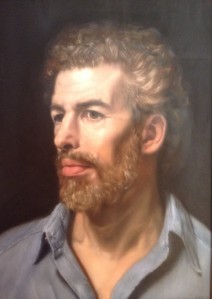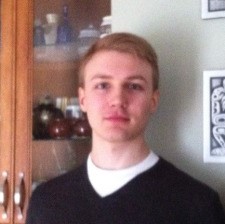In-Sight Publishing
Born to do Math 5 - 1,001 and the Box (Part 3)
Born to do Math 5 - 1,001 and the Box (Part 3)
Scott Douglas Jacobsen & Rick Rosner
March 12, 2017
[Beginning of recorded material]
Scott Douglas Jacobsen: When I think about the quantum tunneling
mentioned before, by you, I think about when I worked with Dr. Thabet, Manahel,
she worked with various people: Raymond Keene, the chess grandmaster, Tony
Buzan, the Mind Maps guy, and Michael Gelb, the Leonardo da Vinci systems guy.
One project that we worked on was quantum biology and the prospects for quantum
computation in the brain.
In one theory brought by Anirban Bandyopadhyay, Roger Penrose - who is more respected and prominent of the triplet of these people, and an anesthesiologist named Stuart Hameroff. it had to do with microtubule calculations in synchrony. Does any of this stuff hold water to you?
Rick Rosner: I don’t buy quantum computation
in the brain. One reason is—I don’t know who has said this—you need a lot of
things for things to be quantum entangled. You need to set up initial
conditions. There are instances of quantum entanglement all over the place. But
to make the brain’s business run on quantum entanglement, you’d need less heat
in the brain, much more precisely controlled conditions. I buy that argument.
I also buy the argument, which is that when
you look at the grain of thought in the human brain. If we had quantum
computing, thought would be much more HD, high-def, than it is. The level of
computing or the graininess of our thoughts of the world seems to me consistent
with a computer of a brain that 10^10th or so neurons. Somebody said
85 billion.
S: 86 billion is the standard metric now. 8.6*10^10?
R: Yea, yea, that with a bazillion dendrites with
the dendrites constantly reaching out and pulling back to more efficiently wire
the brain and its processing. Our thoughts seem consistent with that minus
quantum computing. If we had a little quantum computer in each of our neurons,
that would multiply the computational and information processing of our brains,
I dunno, a million-fold or a billion-fold. Our brains are just not that
powerful.
S: I have heard critics.
R: Yea.
S: I remain agnostic, remaining strongly towards the mainstream, because
the full research has not come in. Although, I agree the arguments that you’re
stating are fair.
R: I’ve given two fair arguments. Let me make
an unfair argument.
S: I was just about to.
R: Okay, you do yours. Then I’ll do mine.
S: Okay, two. One is argument from authority. One famous researcher
disagrees with the findings or disagrees with the theory. Therefore, the theory
or the findings are invalid. I have heard this argument. Another, if I may, is simple
ad hominem, which is to discount the
person through a series of resorts to personal attack. And you?
R: Let me give my unfair argument. To me, the
whole idea that there’s quantum computing happening is like “woo-hoo” one
mysterious thing kinda equals another mysterious thing. And quantum computing
is powerful and mysterious and has intricate math, and consciousness is
complicated, non-characterizable by current means for the most part and
powerful and, therefore, consciousness must equal the other mysterious powerful
thing of quantum computing.
Let’s mush two things together, that are
powerful and mysterious and say one is involved with the other. That’s unfair.
S: That’s unfair, and I can see good reason for it. It’s mysticism or
spiritualism injected into explanation for a theory. Those labelled and
dismissed as spiritualists will label and dismiss the others are fundamentalist
materialists. Both aren’t helpful, and don’t really do much, except
tar-and-feather.
R: I’ve got one fair argument against. So in
my opinion, consciousness is distributive, it is a trans-brain phenomenon. It
is like Minsky’s Society of Mind. It
is chatter and gossip and information shared among the brain’s various expert
subsystems in real-time.
S: Do you mean module-to-module and neuron-to-neuron?
R: Module-to-module instead of
neuron-to-neuron. It’s your brain’s vision centers. The various processing
centers involved in vision to give a conscious feeling to vision, and those
interacting with lexical centers to apply words, and emotions. Everything
is—consciousness is shipping stuff on a grand scale among the various expert
systems in your brain. I don’t like the word holistic, but it is a whole brain
kinda thing.
As opposed to trying to find consciousness in
particular microtubules with each glowing consciousness seems to be counter to
the way thinking actually works, it is not like tubules in their quantumness
are somehow—now if you did have quantum computers in your brain, it could make
the processing done by each of the expert subsystems much more high-def, and
the high-def communication would make a much more high-def consciousness.
But you don’t need the high-defness of the
microtubules being quantum computers to get consciousness. They would rev it
up, but would not be these emanators with this green glow of consciousness.
[Laughing]
[End of recorded material]
Authors[1]

Rick Rosner
American Television Writer
RickRosner@Hotmail.Com
Rick Rosner

Scott Douglas Jacobsen
Editor-in-Chief, In-Sight Publishing
Scott.D.Jacobsen@Gmail.Com
In-Sight Publishing
Endnotes
[1] Four format points for the session article:- Bold text following “Scott Douglas Jacobsen:” or “Jacobsen:” is Scott Douglas Jacobsen & non-bold text following “Rick Rosner:” or “Rosner:” is Rick Rosner.
- Session article conducted, transcribed, edited, formatted, and published by Scott.
- Footnotes & in-text citations in the interview & references after the interview.
- This session article has been edited for clarity and readability.
- American Psychological Association. (2010). Citation Guide: APA. Retrieved from http://www.lib.sfu.ca/system/files/28281/APA6CitationGuideSFUv3.pdf.
- Humble, A. (n.d.). Guide to Transcribing. Retrieved from http://www.msvu.ca/site/media/msvu/Transcription%20Guide.pdf.
License
In-Sight Publishing and In-Sight: Independent Interview-Based Journal by Scott Douglas Jacobsen is licensed under a Creative Commons Attribution-NonCommercial-NoDerivatives 4.0 International License.
Based on a work at www.in-sightjournal.com and www.rickrosner.org.
Copyright
© Scott Douglas Jacobsen, Rick Rosner, and In-Sight Publishing and In-Sight: Independent Interview-Based Journal 2012-2017. Unauthorized use and/or duplication of this material without express and written permission from this site’s author and/or owner is strictly prohibited. Excerpts and links may be used, provided that full and clear credit is given to Scott Douglas Jacobsen, Rick Rosner, and In-Sight Publishing and In-Sight: Independent Interview-Based Journal with appropriate and specific direction to the original content.
No comments:
Post a Comment